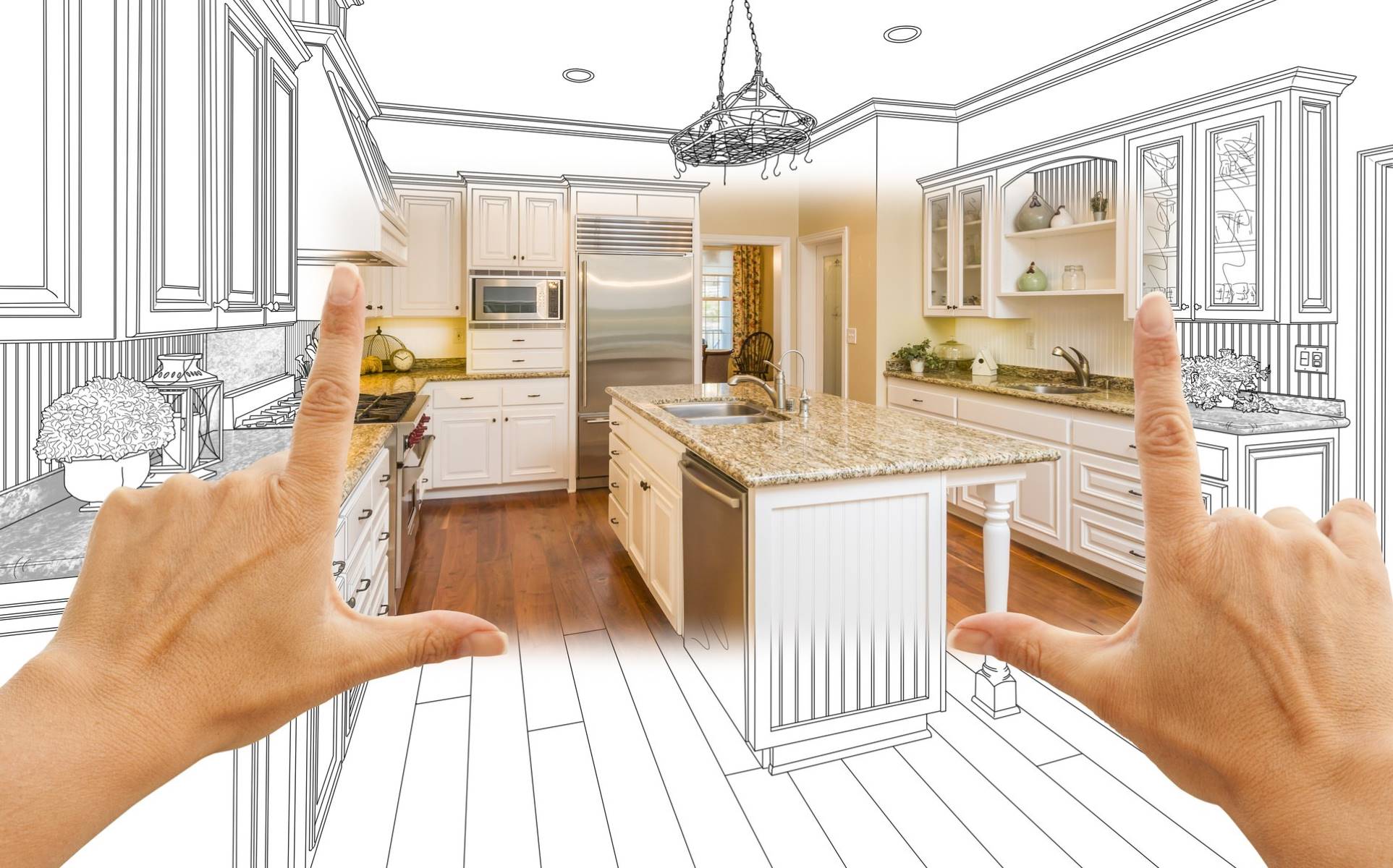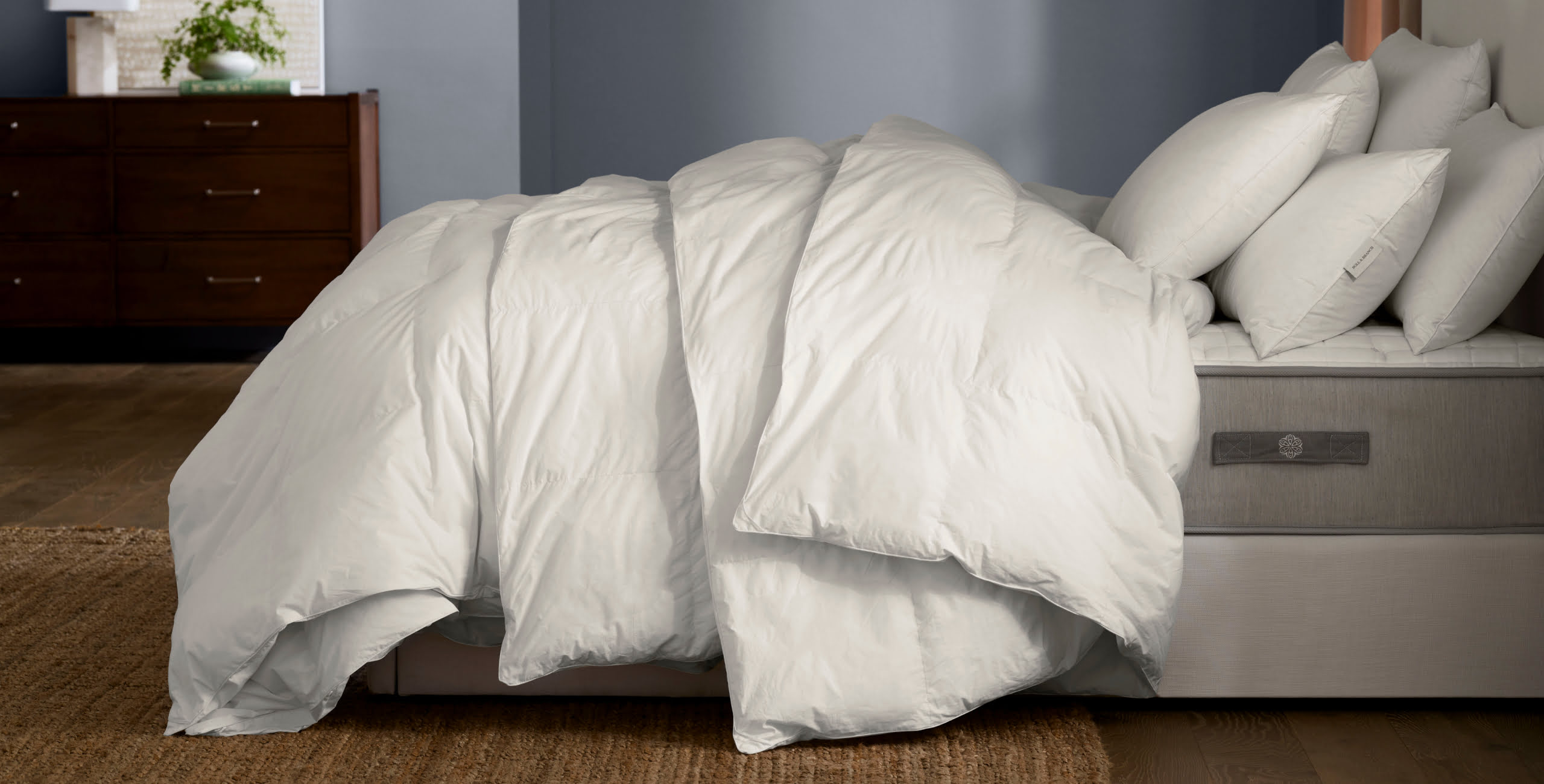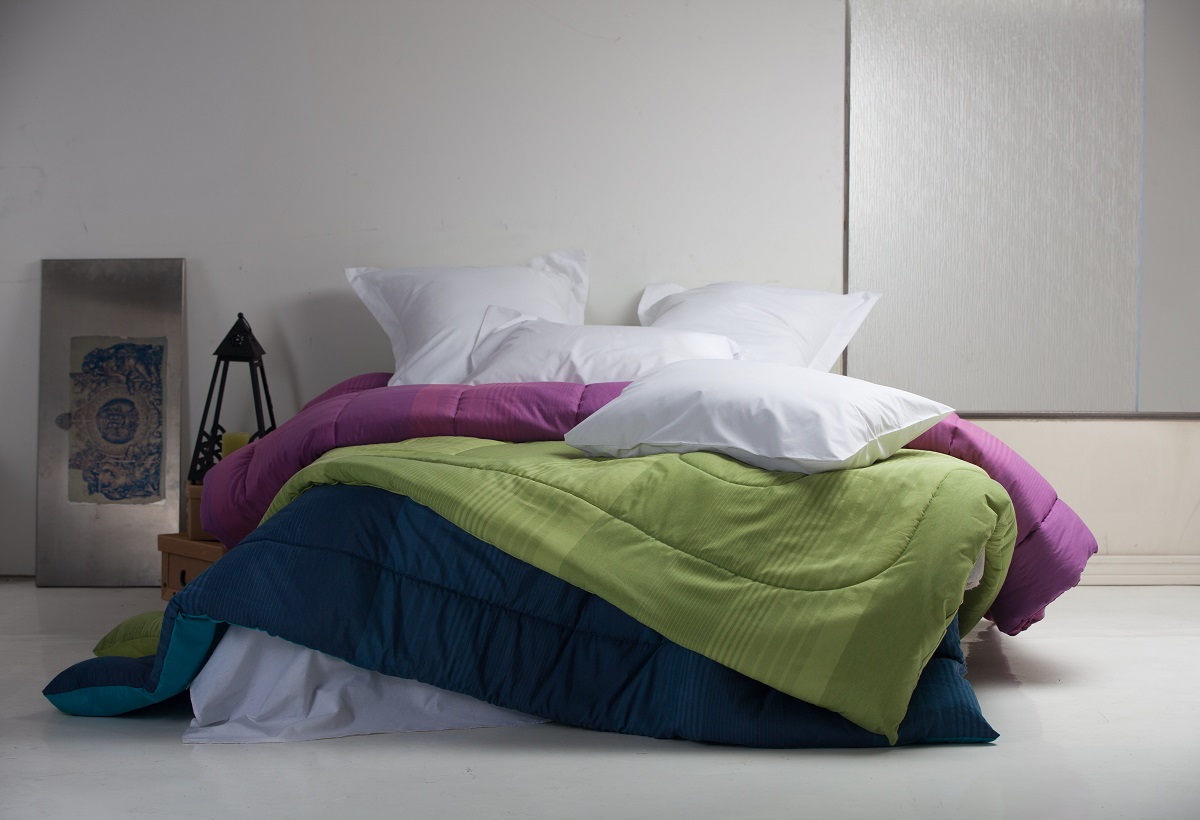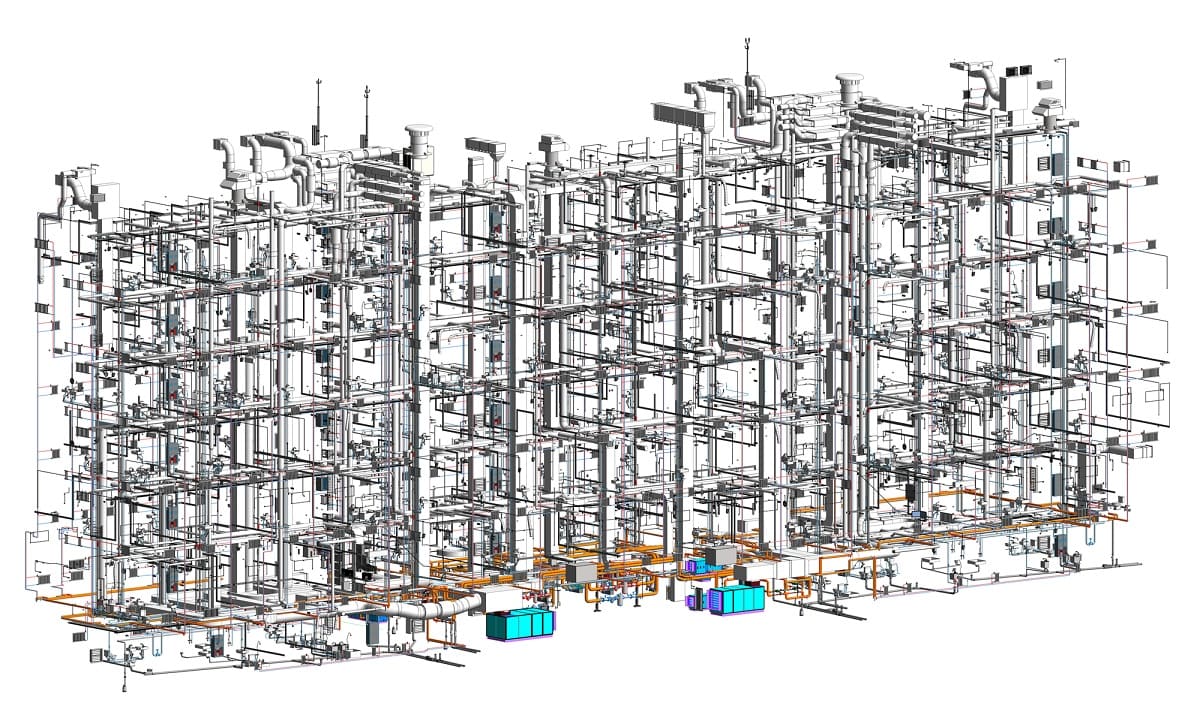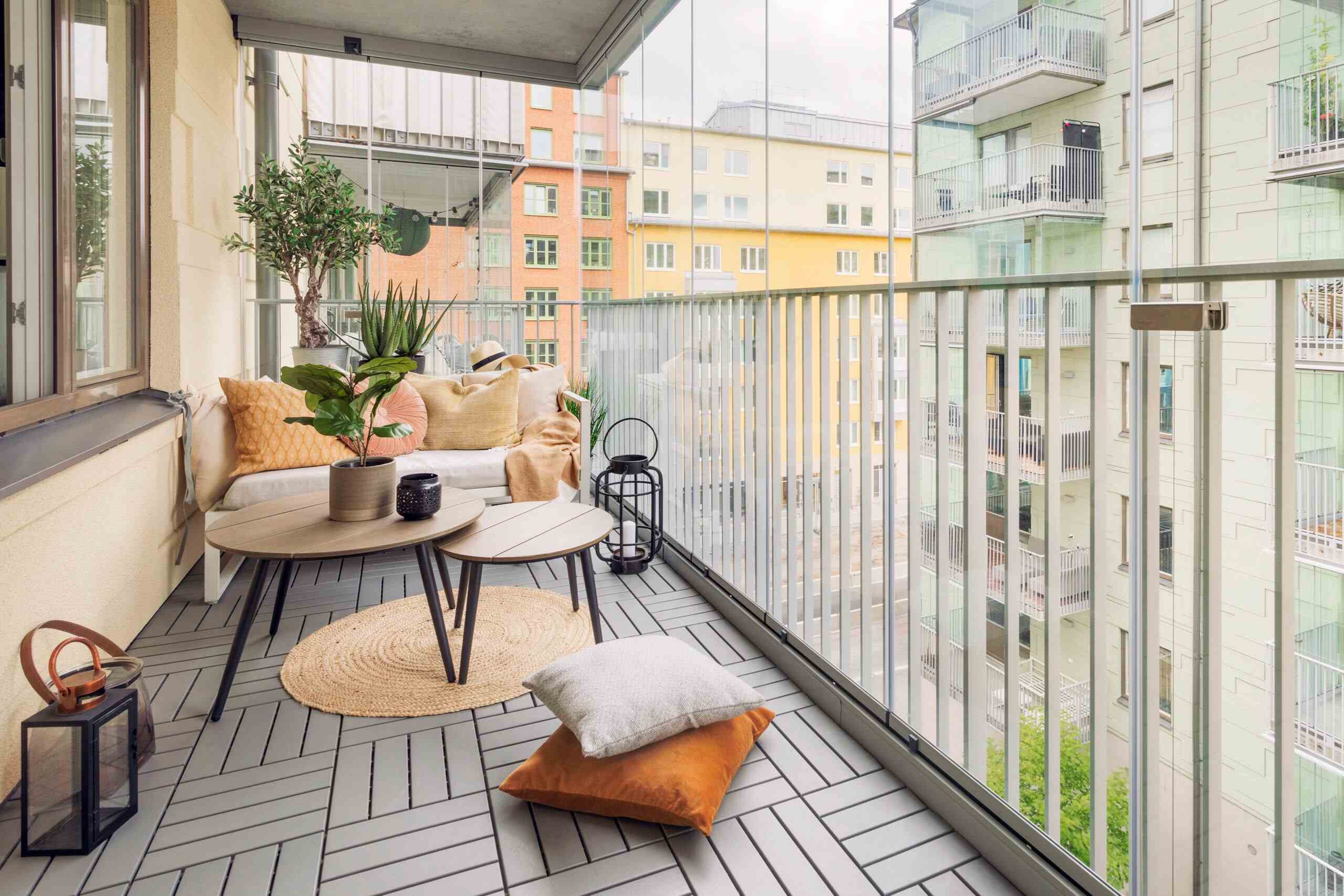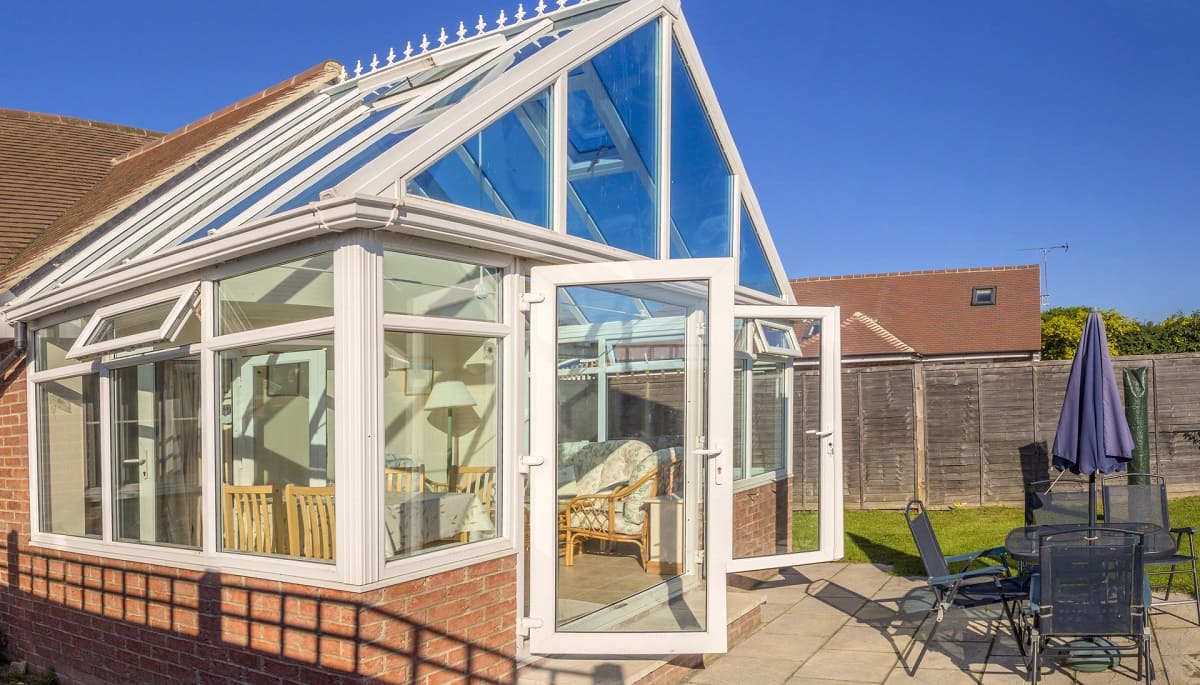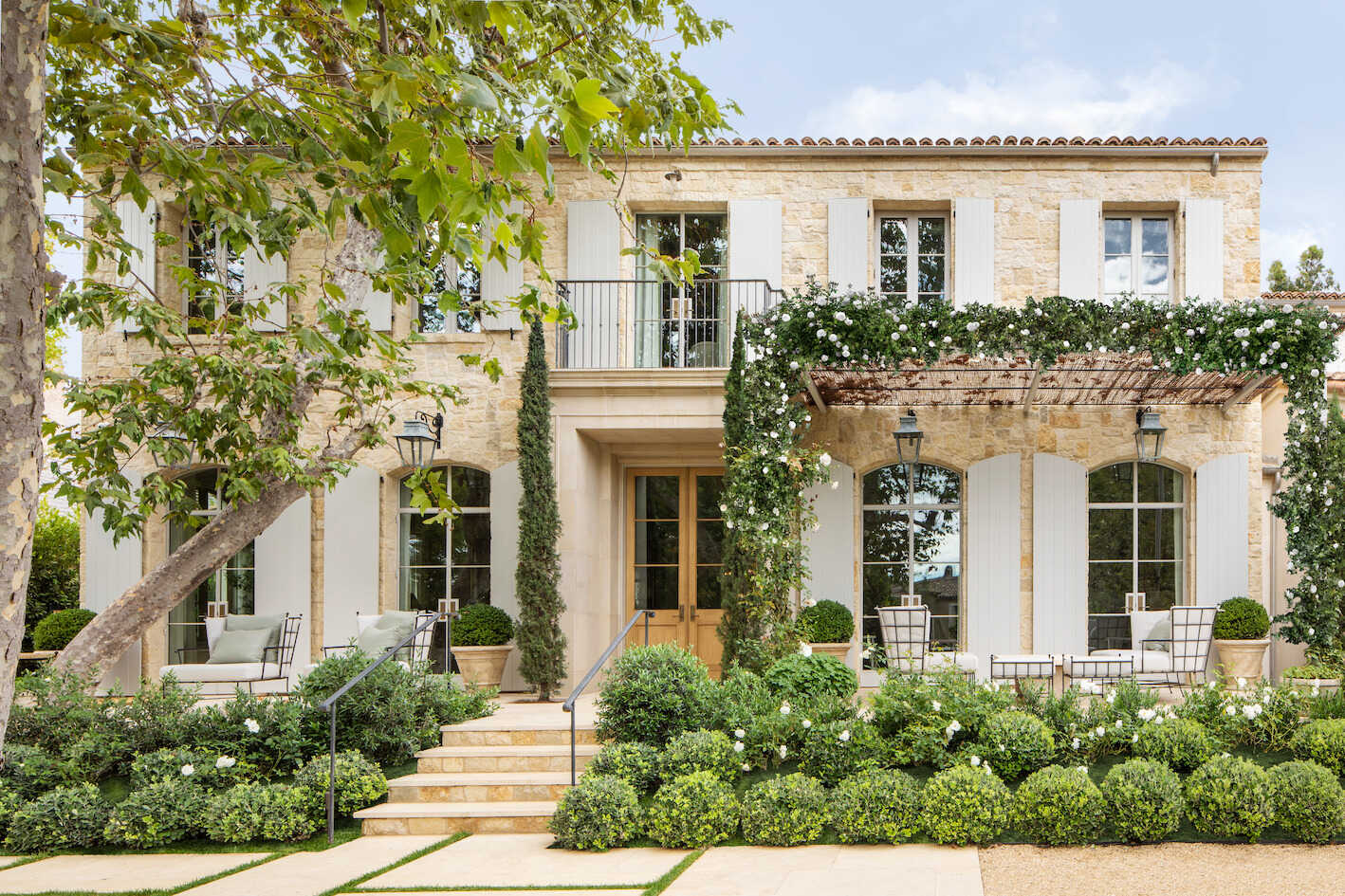Home>Articles>What Is The Difference Between Shades And Blinds
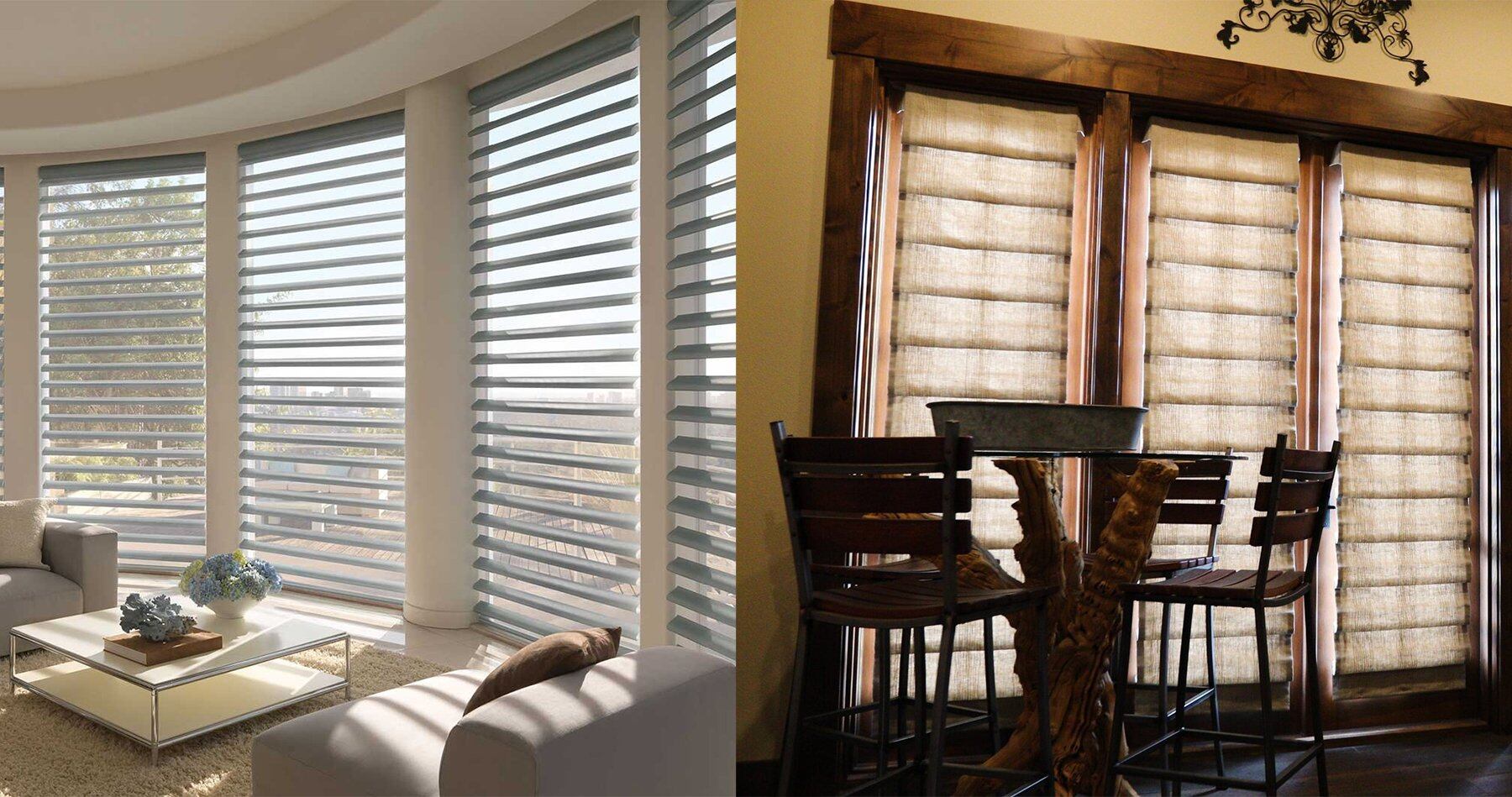

Articles
What Is The Difference Between Shades And Blinds
Modified: January 18, 2024
Discover the key distinctions between shades and blinds in this informative article. Explore the pros and cons of each option to choose the best window treatment for your space.
(Many of the links in this article redirect to a specific reviewed product. Your purchase of these products through affiliate links helps to generate commission for Storables.com, at no extra cost. Learn more)
Introduction
When it comes to window coverings, shades and blinds are two popular options that offer both functional and aesthetic benefits. However, many people are often unsure about the differences between these two types of window treatments. In this article, we will delve into the distinctions between shades and blinds, exploring their materials, designs, functionality, and more.
Shades and blinds are both window coverings that provide privacy, control light, and enhance the overall appeal of a room. Understanding their features and benefits can help you make an informed decision when choosing the right window treatment for your home or office.
So, let’s explore the key differences between shades and blinds to find out which option best suits your needs and preferences.
Key Takeaways:
- Shades offer a soft and elegant look with varying levels of light control and privacy. They are affordable, easy to operate, and come in a variety of designs to match any interior style.
- Blinds provide precise light control and privacy with adjustable slats. They offer versatility in operation, come in different materials and designs, and can be tailored to fit various window configurations.
Definition of Shades
Shades, also known as window shades or roller shades, are window coverings made of a single piece of fabric that can be raised or lowered with the help of a cord or a spring mechanism. They are designed to block out sunlight and provide privacy when closed, while allowing natural light to filter through when opened partially.
Shades come in a variety of materials, including polyester, cotton, and synthetic blends. Depending on the desired level of light control, shades can be categorized into different opacities such as sheer, light-filtering, and room-darkening.
Sheer shades are translucent and offer minimal privacy while allowing soft, diffused light to pass through. Light-filtering shades strike a balance between privacy and light control, providing UV protection and reducing glare while still allowing some natural light into the room. Room-darkening shades, as the name suggests, block most of the incoming light and are ideal for bedrooms or home theaters where light control is crucial.
Shades also come in a variety of designs, including roller shades, cellular shades, Roman shades, and pleated shades. Roller shades are simple and versatile, rolling up into a compact tube when not in use. Cellular shades have a unique honeycomb structure that provides superior insulation and energy efficiency. Roman shades are known for their timeless elegance and can be customized with various fabrics and patterns. Pleated shades feature a neat, accordion-like design that adds texture and depth to any window.
Overall, shades are a popular choice for their simplicity, affordability, and variety of styles and materials. They are suitable for any room and offer a clean, streamlined look that complements both modern and traditional decor.
Definition of Blinds
Blinds are window coverings made of slats or vanes that can be tilted or adjusted to control the amount of light and privacy in a room. Unlike shades, blinds offer more precise control over light and visibility by allowing you to adjust the angle and position of the slats.
Blinds are available in various materials, including wood, faux wood, aluminum, and vinyl. Wood blinds add a touch of warmth and elegance to any space, while faux wood blinds offer the same aesthetic appeal with added durability and resistance to moisture. Aluminum blinds are lightweight and durable, making them a popular choice for high-traffic areas. Vinyl blinds are affordable, easy to maintain, and suitable for rooms with high humidity, such as bathrooms and kitchens.
The two main types of blinds are horizontal blinds and vertical blinds. Horizontal blinds, also referred to as Venetian blinds, have slats that run horizontally across the window. They can be adjusted to control the amount of light and privacy by tilting the slats up or down. Vertical blinds, on the other hand, have vanes that hang vertically from a track. They are commonly used for sliding glass doors or large windows and can be easily operated to provide unobstructed views or complete privacy.
Blinds offer versatile design options, allowing you to customize the look of your windows. They come in a range of colors, finishes, and slat sizes, which can complement any interior style. From sleek and contemporary to traditional and rustic, blinds can be tailored to match the overall aesthetic of your space.
One notable advantage of blinds is their excellent light control. By adjusting the angle of the slats, you can direct light to different areas of the room, reducing glare and protecting your furniture and flooring from UV damage. In terms of privacy, blinds offer more flexibility as the slats can be tilted to provide varying levels of visibility.
Blinds are generally considered to be a more durable and long-lasting window treatment option. They are easy to clean and maintain, making them suitable for high-traffic areas or homes with pets and children.
In summary, blinds offer precise light control, privacy options, and a wide variety of designs and materials. They provide a classic and timeless look that adds both functionality and style to any space.
Material and Design
Both shades and blinds come in a wide range of materials and designs, allowing you to choose options that best suit your style and functional needs.
Shades are available in various fabrics, including polyester, cotton, linen, and synthetic blends. The material you choose can impact the overall look and feel of the space. For instance, sheer fabric shades create an airy and light ambiance, while heavier fabrics like linen or polyester offer a more substantial and cozy appearance.
Blinds, on the other hand, are available in materials such as wood, faux wood, aluminum, and vinyl. Wood blinds bring a natural and warm feel to a room, adding a touch of elegance and sophistication. Faux wood blinds offer the same aesthetic appeal as wood but with increased durability and resistance to moisture. Aluminum blinds are sleek and modern, while vinyl blinds are affordable, easy to maintain, and suitable for high humidity areas.
In terms of design, shades come in various styles, including roller shades, cellular shades, Roman shades, and pleated shades. Roller shades have a simple and minimalist design, with a fabric panel that rolls up when not in use. Cellular shades have a unique honeycomb structure that provides superior insulation and energy efficiency. Roman shades offer a tailored and sophisticated look, with fabric folds that stack neatly when the shade is raised. Pleated shades have a pleated accordion-like design that adds texture and depth to the window.
Blinds, on the other hand, are available in both horizontal and vertical designs. Horizontal blinds, also known as Venetian blinds, have slats that run horizontally across the window. They can be adjusted by tilting the slats up or down to control light and privacy. Vertical blinds have vanes that hang vertically from a track, making them an ideal choice for large windows and sliding glass doors. Vertical blinds can be easily opened or closed to provide unobstructed views or complete privacy.
When choosing the material and design of your window coverings, consider the existing interior style of the room and the functionality you require. Shades offer a softer, more fabric-oriented look and are versatile in terms of opacity options, while blinds provide a more structured and adjustable appearance.
Ultimately, the material and design choices for shades and blinds come down to personal preference and the desired aesthetic for your space. Take into account the overall style and functionality you are looking to achieve to make the best decision for your window coverings.
Functionality and Operation
When it comes to functionality and operation, shades and blinds offer different features that cater to various needs and preferences.
Shades are designed to be easy to use, with a simple cord or spring mechanism that allows you to raise or lower the shade to your desired height. This makes them a convenient option for everyday use. Some shades also offer motorized operation, allowing you to control the shade with a remote control or smartphone app. Motorized shades provide an added level of convenience, especially for hard-to-reach windows or for those who prefer a more automated approach to their window coverings.
Blinds, on the other hand, offer more precise control over light and privacy. The slats of blinds can be adjusted to allow in or block out light, depending on your preferences. This allows you to customize the amount of natural light entering the room and create different ambiance throughout the day. The operation of blinds is typically done through a tilting mechanism that allows you to angle the slats up or down. You can also raise or lower the entire blind to fully open or close the window.
Another aspect of functionality to consider is the safety of your window coverings. Both shades and blinds can present potential hazards, especially for homes with young children or pets. It’s important to choose window coverings with safety features like cordless options or cord cleats to secure and prevent entanglement. Additionally, motorized shades and blinds eliminate the need for cords altogether, providing a safer option for households with kids or pets.
In terms of operation, shades offer simplicity and ease of use with their straightforward raising and lowering mechanism. Blinds, on the other hand, offer more versatility and control over light and privacy with their tilting and raising mechanisms.
Ultimately, the choice between shades and blinds in terms of functionality and operation depends on your specific needs and preferences. Consider how you plan to use the window coverings and the level of control you desire over light and privacy.
When choosing between shades and blinds, consider the level of light control and privacy you need. Blinds have adjustable slats for precise light control, while shades offer a softer, diffused light.
Light Control
Light control is an important factor to consider when choosing window coverings, as it can greatly impact the ambiance and functionality of a space. Both shades and blinds offer different levels of light control, allowing you to create the desired atmosphere in your room.
Shades provide varying degrees of light control depending on their opacity. Sheer shades, for example, gently filter natural light, creating a soft and diffused glow in the room. They offer a level of privacy while still allowing visibility to the outside. Light-filtering shades strike a balance between privacy and light control, diffusing direct sunlight and reducing glare while still providing a level of natural light. Room-darkening shades are designed to block out most of the light, making them an excellent choice for bedrooms, home theaters, or any space where light control is paramount.
Blinds offer precise control over light and visibility. By adjusting the angle of the slats, you can regulate the amount of sunlight entering the room. Tilting the slats upward allows natural light to filter in while maintaining privacy. Tilting them downward blocks out sunlight entirely, providing a darker and more intimate space. With blinds, you have the flexibility to create the perfect balance of light and privacy throughout the day.
The materials used in shades and blinds can also affect light control. Thicker fabrics or materials with blackout properties in shades provide superior light-blocking capability. On the other hand, blinds made from materials such as wood or aluminum can effectively control light by redirecting and diffusing it.
If light control is a top priority for you, consider the opacity level and adjustability of the window coverings. Shades offer a softer and more diffused light, while blinds provide precise control over the amount of light and visibility in a room.
Keep in mind that the orientation of your windows, the direction of sunlight, and the desired ambiance will also impact the effectiveness of light control. Experiment with different window coverings to find the ideal solution for your space.
Privacy
Privacy is a crucial aspect to consider when choosing window coverings for your home or office. Both shades and blinds offer different levels of privacy, allowing you to maintain a sense of seclusion and control over who can see into your space.
Shades provide varying degrees of privacy depending on their opacity. Sheer shades, with their translucent fabric, offer a level of privacy during the day while still allowing visibility to the outside. They provide a soft and diffused view, making them ideal for areas where maintaining a connection to the outside world is desired. Light-filtering shades offer more privacy and reduce the visibility from the outside while still allowing some natural light to enter the room. Room-darkening shades, designed to block out most of the light, provide the highest level of privacy, making them suitable for bedrooms, bathrooms, or any space where complete seclusion is desired.
Blinds, on the other hand, offer versatile privacy options due to their tilting slats. By adjusting the angle of the slats, you can regulate the visibility into your space. Tilt the slats upward to allow natural light to filter in while maintaining privacy. Tilt them downward to block out visibility completely, providing a higher level of seclusion.
In terms of material, both shades and blinds can provide privacy depending on the thickness and opacity of the fabric or slats. Thicker materials or those with blackout properties will offer more privacy compared to sheer materials.
It’s important to note that privacy needs may vary based on the location and function of the room. Consider the level of privacy required in each specific room and choose the window coverings accordingly. For example, bedrooms, bathrooms, and ground-floor spaces may require more privacy compared to living areas or offices.
Overall, shades and blinds offer different levels of privacy based on their opacity, material, and adjustability. Consider your specific privacy needs and the desired balance between visibility and seclusion when selecting window coverings for your space.
Versatility
When it comes to versatility, both shades and blinds offer a range of options to suit different styles and functional needs in your space.
Shades come in various designs and materials, allowing you to choose options that complement your existing decor. Roller shades, for example, have a simple and minimalist design that works well in contemporary spaces. Cellular shades with their honeycomb structure offer superior insulation, making them suitable for energy-efficient homes. Roman shades provide a timeless and elegant look, while pleated shades add texture and depth to windows.
Shades also offer versatility in terms of opacity. Whether you prefer sheer, light-filtering, or room-darkening options, there’s a shade out there to fulfill your needs. This allows you to control light and privacy based on your specific requirements for different areas of the home or office.
Blinds, on the other hand, offer versatility in terms of design and functionality. They come in a range of materials, colors, and slat sizes, allowing you to match them to any interior style. Wood blinds create a warm and natural feel, while faux wood blinds offer the same aesthetic appeal with added durability. Aluminum blinds provide a sleek and modern look, while vinyl blinds are an affordable and practical option for various spaces.
Blinds also offer versatility in terms of operation. You can adjust the slats to control light and privacy, as well as raise or lower the entire blind to fully open or close the window. Vertical blinds are particularly versatile for large windows and sliding glass doors, allowing easy access and unobstructed views when needed.
Both shades and blinds can be customized to fit different window sizes and shapes, allowing them to adapt to a variety of window configurations. This makes them suitable for any room in your home or office.
Overall, shades and blinds provide a wide range of design options and functionalities, allowing you to select window coverings that seamlessly blend with your existing decor and cater to your specific needs.
Cost and Installation
When it comes to cost and installation, shades and blinds offer different considerations that can influence your decision-making process.
In terms of cost, shades tend to be more affordable compared to blinds. The price of shades can vary based on factors such as the material, design, and brand. Generally, roller shades and pleated shades are on the lower end of the price spectrum, while cellular shades and Roman shades can be slightly more expensive due to their additional features and customization options.
Blinds, on the other hand, can be a bit more expensive than shades, depending on the material chosen. Wood blinds are often the most expensive option, with the cost varying based on the type of wood used. Faux wood blinds are a more budget-friendly alternative that still provides the look and feel of real wood. Aluminum blinds and vinyl blinds are typically the most affordable options.
Installation is typically straightforward for both shades and blinds, and many homeowners choose to install them themselves. With shades, you will need to mount brackets or clips to secure the shade and ensure proper operation. Blinds require mounting brackets to secure the headrail, and you may also need to install valances or hold-down brackets depending on the specific type of blind and your aesthetic preferences. Most shades and blinds come with installation instructions to guide you through the process.
However, if you prefer professional installation or have more complex window configurations, it’s recommended to seek the assistance of a window treatment specialist. They can ensure proper measurements, placement, and installation, especially for custom or motorized options.
It’s important to note that the overall cost and installation process can also be influenced by factors such as the size and number of windows being treated, any additional features or customization options chosen, and geographic location.
When considering cost and installation, it’s essential to weigh your budget, the complexity of the project, and your comfort level with DIY installation. Additionally, consider the long-term value and functionality of the window coverings to make an informed decision.
Final Thoughts
Choosing between shades and blinds can be a daunting task, as both options offer their own unique set of features and benefits. By understanding the differences in material, design, functionality, light control, privacy, versatility, cost, and installation, you can make an informed decision that best suits your needs and preferences.
Shades provide a soft and elegant look, offering varying levels of light control and privacy. They come in a variety of designs and opacities to match any interior style, and their affordability makes them an attractive choice for many homeowners. Shades are easy to operate and can be customized with motorized options for added convenience.
On the other hand, blinds offer precise light control and privacy with their adjustable slats. They come in different materials and designs, allowing you to choose options that fit your style and budget. Blinds provide versatility in terms of operation and can be tailored to fit various window configurations, making them suitable for a range of spaces.
Consider your specific needs, including the amount of light control and privacy desired, the overall aesthetic of your space, and your budgetary constraints. It’s also important to factor in the long-term benefits and durability of the window coverings.
Remember to prioritize safety when selecting shades or blinds, especially if you have young children or pets. Ensure that the window coverings you choose have proper safety features in place or consider motorized options to eliminate the need for cords.
Ultimately, the choice between shades and blinds is a personal one. It’s worth exploring different options, researching customer reviews, and consulting with window treatment experts to make the best decision for your specific requirements.
Whichever option you choose, incorporating shades or blinds into your space can enhance its functionality, aesthetics, and overall appeal. Enjoy the process of finding the perfect window coverings that reflect your unique style and create a comfortable living or working environment.
Frequently Asked Questions about What Is The Difference Between Shades And Blinds
Was this page helpful?
At Storables.com, we guarantee accurate and reliable information. Our content, validated by Expert Board Contributors, is crafted following stringent Editorial Policies. We're committed to providing you with well-researched, expert-backed insights for all your informational needs.



